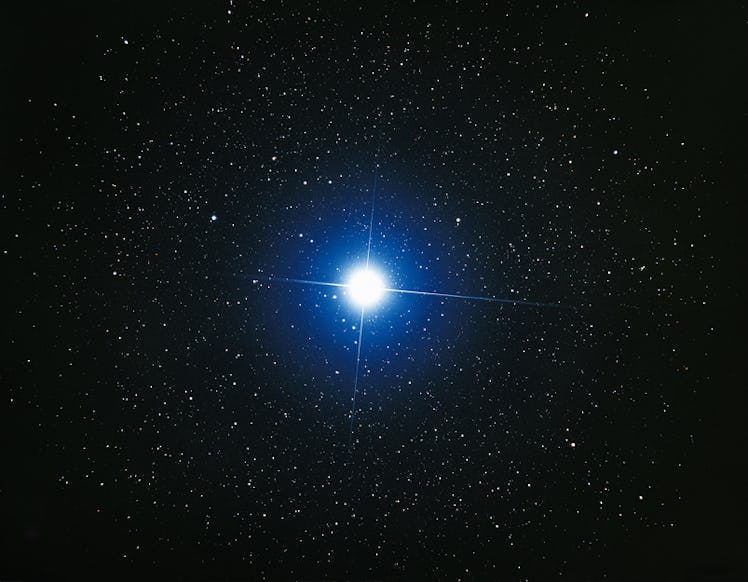How To View The Sirius Star In The Canis Major Constellation Right Now
If you’re interested in looking at the brightest star in all of the sky, and the sparkling constellation it’s within, right now is the best time to see them in all their glory.

There are so many things to not love about winter: It’s cold, it’s dark, it’s long. But one amazing thing that comes from the long nights is the extra time to see more incredible sights up in the sky. This includes a sparkling constellation that you can view with the naked eye, particularly easily in the winter.
“For those in the Northern Hemisphere, winter is the best time to observe the constellation Canis Major the Greater Dog...It is visible in the northern hemisphere from December through March,” EarthSky.org explains. “Sirius is the brightest star not only in Canis Major but also in all of the heavens.”
If you’re interested in looking at the brightest star in the sky and the sparkling constellation it’s a part of, right now is the best time to see them in all their glory.
What are the Canis Major and Sirius?
The Canis Major is a constellation that means “the greater dog” in Latin. This constellation is made up of 10 stars, including Adhara, Aludra, Amadioha, Atakoraka, Furud, Mirzam, Muliphein, Sirius, Unurgunite, and Wezen, according to Forbes.
Among those 10 stars is Sirius, the brightest star in our sky — even brighter than Orion, which is located on the celestial equator. The Sirius star is the closest to Earth among all the millions up there, at only 8.6 lightyears away, which is why we can see it shine the brightest.
According to Constellation Guide, Sirius is made of two components: Sirius A and Sirius B. “The distance between the two stars varies between 8.1 and 31.5 astronomical units. The companion is not visible to the unaided eye,” the guide explains.
Both components are huge, with Sirius A being twice the Sun's mass and way more luminous, while Sirius B is nearly equal to the Sun's mass.
How can I view this constellation with the kids?
Right now, you can spot the Canis Major and Sirius in the sky without any equipment, making it perfect for winter viewing with the kids.
The easiest way to spot the Canis Major constellation and get a good look at Sirius seems to be to locate Orion’s Belt first. Since that’s one of the most popular objects in the sky, it’s usually a good guide mark to start from.
From there, you can locate the three stars in the Orion Belt, then look down toward the eastern horizon, The Farmer’s Almanac explains. Sirius is just south of Orion, and it should be easy to spot since it’s the brightest star you’ll see in that area. It will shine a bright and noticeable white.
If you’re new to looking at these sky shows, there are interactive sky maps — like this one from Sky & Telescope — to help find the best instructions to locate Sirius from where you live.